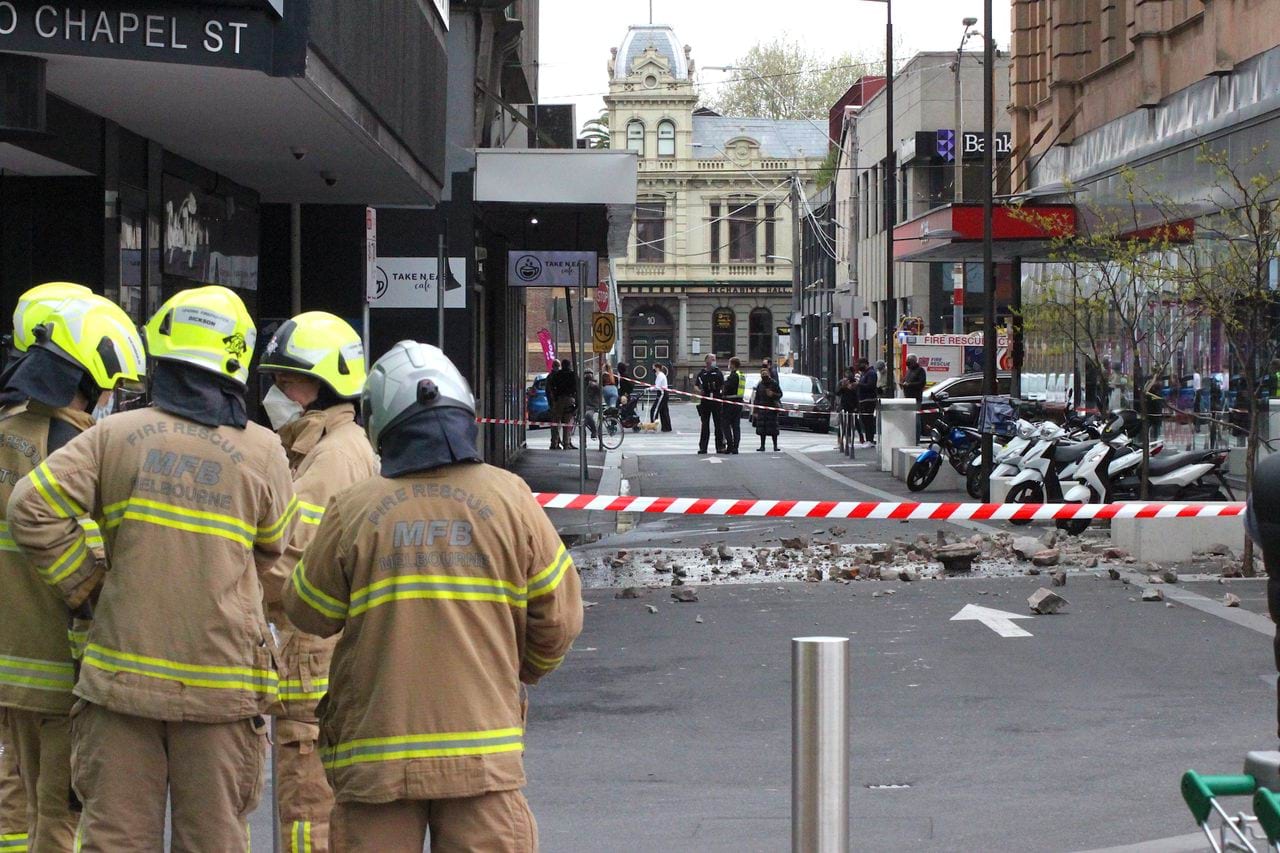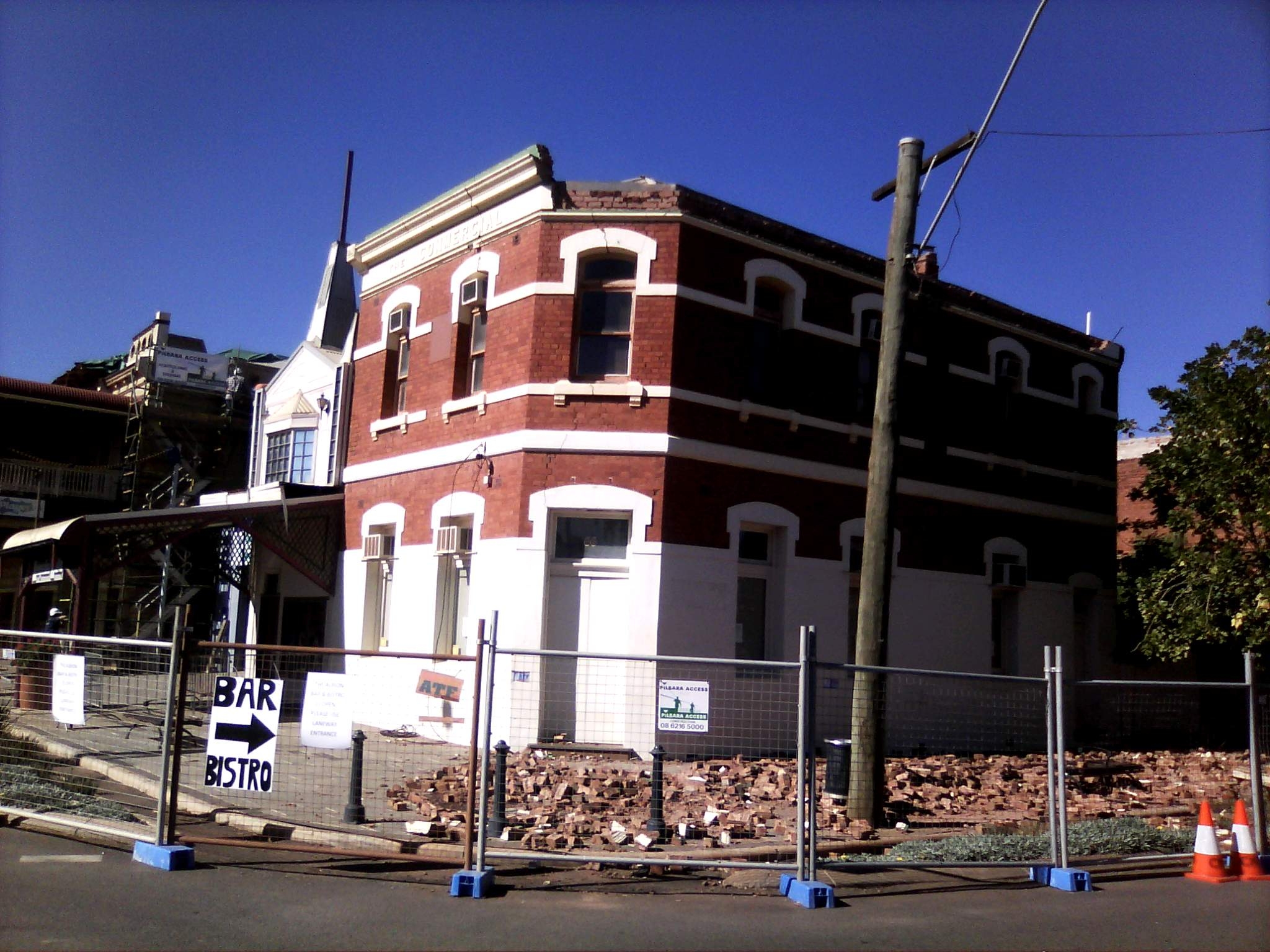Case study Retrofitting Melbourne’s buildings to withstand earthquakes
How Geoscience Australia demonstrated the effectiveness of a mitigation program against building-related earthquake risk.
Page last updated:3 March 2021

The problem
Assessing the value of making Melbourne’s older buildings earthquake resistant
Until the mid-1990s, Australian building design took little account of earthquake hazard. As a result, our cities have many buildings, particularly older unreinforced masonry ones, that can readily suffer damage in moderate to severe earthquakes. Over the last 70 years, earthquake events in Australian locations including Adelaide, Meckering, Newcastle and Kalgoorlie have highlighted this risk.
Melbourne’s central business district (CBD) is vulnerable, as nearly half its buildings are of unreinforced masonry construction. In the event of an earthquake, falling masonry from these buildings could greatly add to human casualties. The severity of damage to buildings could impede the recovery of the community physically, economically and socially, and result in a significant loss of heritage value.
One solution is to retrofit these buildings to make them more earthquake resistant, but doing so involves significant cost. With limited data available on the potential quantitative benefits of retrofitting, it’s difficult to justify undertaking projects of this type within communities.
The solution
An evidence base to inform decisions to retrofit
Within the Bushfire and Natural Hazards Collaborative Research Centre (BNHCRC), Geoscience Australia and the University of Adelaide conducted a virtual retrofit of the Melbourne CBD. By comparing the potential costs of earthquake damage before and after a refit, this project provided metrics for the change in vulnerability.
The study identified benefits including:
- reduced post-event logistics problems for emergency management professionals and local governments
- reduced financial losses for building owners, businesses and residents
- reduced injuries, fatalities and health care costs.
It also demonstrated that retrofitting reduces the long-term financial cost of earthquake hazard, potentially making insurance more affordable.
Geoscience Australia works with state and local governments and the emergency management industry sector across Australia to develop local hazard assessments. For more information, contact hazards@ga.gov.au
How we got there
Evaluating risk and the potential costs of earthquake damage in Melbourne
Collaborating with BNHCRC and the University of Adelaide over a period of 2 years, Geoscience Australia:
- used the National Seismic Hazard Assessment (NSHA 2018) to show that Melbourne has a ‘low’ earthquake hazard by global standards, but a significant risk by Australian standards.
- developed a building, business and demographic exposure database using Geoscience Australia’s National Exposure Information System (NEXIS) that was integrated with the Australian Reinsurance Pool Corporation’s (ARPC) engineering survey database developed and maintained by Geoscience Australia.
- assessed the vulnerability of Melbourne’s URM buildings, both in their present condition and after a 30-year retrofit program, using building vulnerability models developed for the Geoscience Australia Earthquake Mitigation of WA Regional Towns: York project.
- simulated the damaging effects of a major earthquake on the present Melbourne CBD and at the end point of the retrofit program adopted. This allowed the study to quantify the change in damage, casualties and economic losses, and calculate the consequences of inaction in economic terms.
- predicted that retrofitting the masonry building stock over 30 years would reduce overall financial losses by approximately 15% and financial risk for unreinforced masonry buildings by 38%. The study showed predicted deaths reduce from 537 people to 439.
Looking forward
Guiding decisions for making older buildings earthquake more resilient
- Geoscience Australia has established a framework to help state and local jurisdictions, and individual building owners, assess the need to retrofit older buildings to withstand earthquake damage.
- The study highlighted the avoided loss of life and associated value that can be gained by retrofitting vulnerable masonry buildings, even in relatively low-risk areas. It paves the way for future studies to be undertaken in high-exposure pedestrian precincts where the potential loss of life is considerably greater.
- Geoscience Australia is continuing to collaborate with international and Australian science organisations to undertake long-term research that supports reducing risk to earthquake hazards.
- Our science, data and tools reflect the latest advancements in science, technology and best practice. We’re working towards the inclusion of a multi-hazards assessment so we can ensure Australian communities are as safe as possible from the consequences of natural hazard events.
How we can help you
Contact us to gain a better understanding of earthquake risk in your community, state, region or sector, so you can develop targeted and effective risk mitigation and risk reduction strategies.
Our earthquake resources can help identify your region’s high-threat areas so you can make better-informed natural hazard decisions.
Email hazards@ga.gov.au









